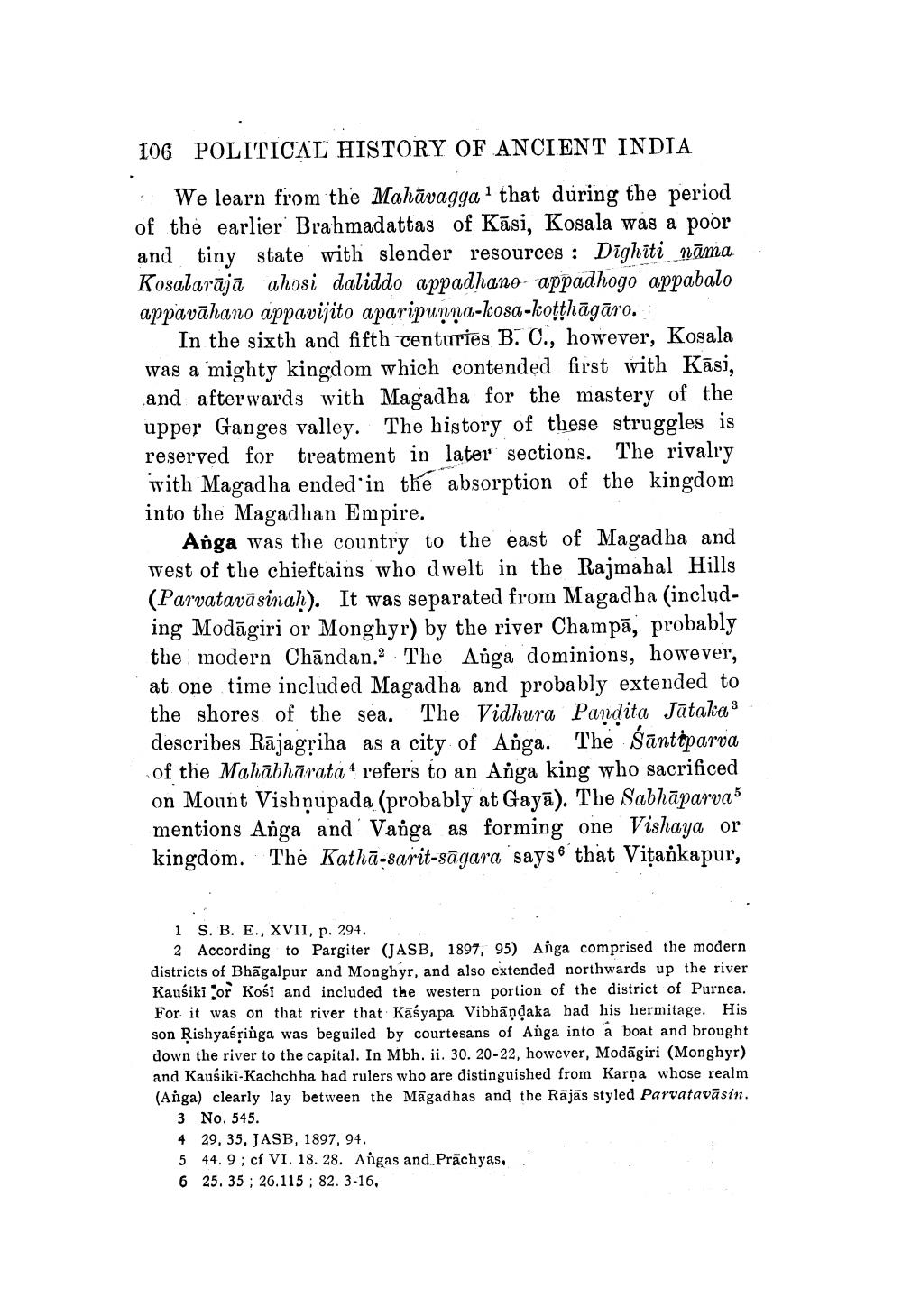________________
106 POLITICAL HISTORY OF ANCIENT INDIA
.: We learn from the Mahāvagga 1 that during the period of the earlier Brahmadattas of Kāsi, Kosala was a poor and tiny state with slender resources : Dīghiti nāma Kosalarājā ahosi daliddo appadhano- appadhogo appabalo appavāhano appavijito aparipunna-kosa-kotthāgāro.
In the sixth and fifth-centuries B. C., however, Kosala was a mighty kingdom which contended first with Kāsi, and afterwards with Magadha for the mastery of the upper Ganges valley. The history of these struggles is reserved for treatment in later sections. The rivalry
Magadha ended in the absorption of the kingdom into the Magadhan Empire.
Anga was the country to the east of Magadha and west of the chieftains who dwelt in the Rajmahal Hills (Parvatavāsinah). It was separated from Magadha (including Modāgiri or Monghyr) by the river Champā, probably the modern Chāndan. The Aiga dominions, however, at one time included Magadha and probably extended to the shores of the sea. The Vidhura Pandita Jātaka: describes Rājagriha as a city of Anga. The śāntiparva of the Mahabharata refers to an Anga king who sacrificed on Mount Vishộupada (probably at Gayā). The Sabhāparva5 mentions Anga and Vanga as forming one Vishaya or kingdom. The Kathā-sarit-sāgara says that Vitankapur,
1 S. B. E., XVII, p. 294.
2 According to Pargiter (JASB, 1897, 95) Anga comprised the modern districts of Bhāgalpur and Monghyr, and also extended northwards up the river Kauśiki or Kośi and included the western portion of the district of Purnea. For it was on that river that Kāśyapa Vibhāndaka had his hermitage. His son Rishyaśpinga was beguiled by courtesans of Anga into a boat and brought down the river to the capital. In Mbh. ii. 30. 20-22, however, Modāgiri (Monghyr) and Kausiki-Kachchha had rulers who are distinguished from Karna whose realm (Anga) clearly lay between the Māgadhas and the Rājās styled Parvatavāsin.
3 No. 545. 4 29, 35, JASB, 1897, 94. 5 44. 9; cf VI. 18. 28. Angas and Prächyas, 6 25. 35 ; 26.115 ; 82.3-16,




